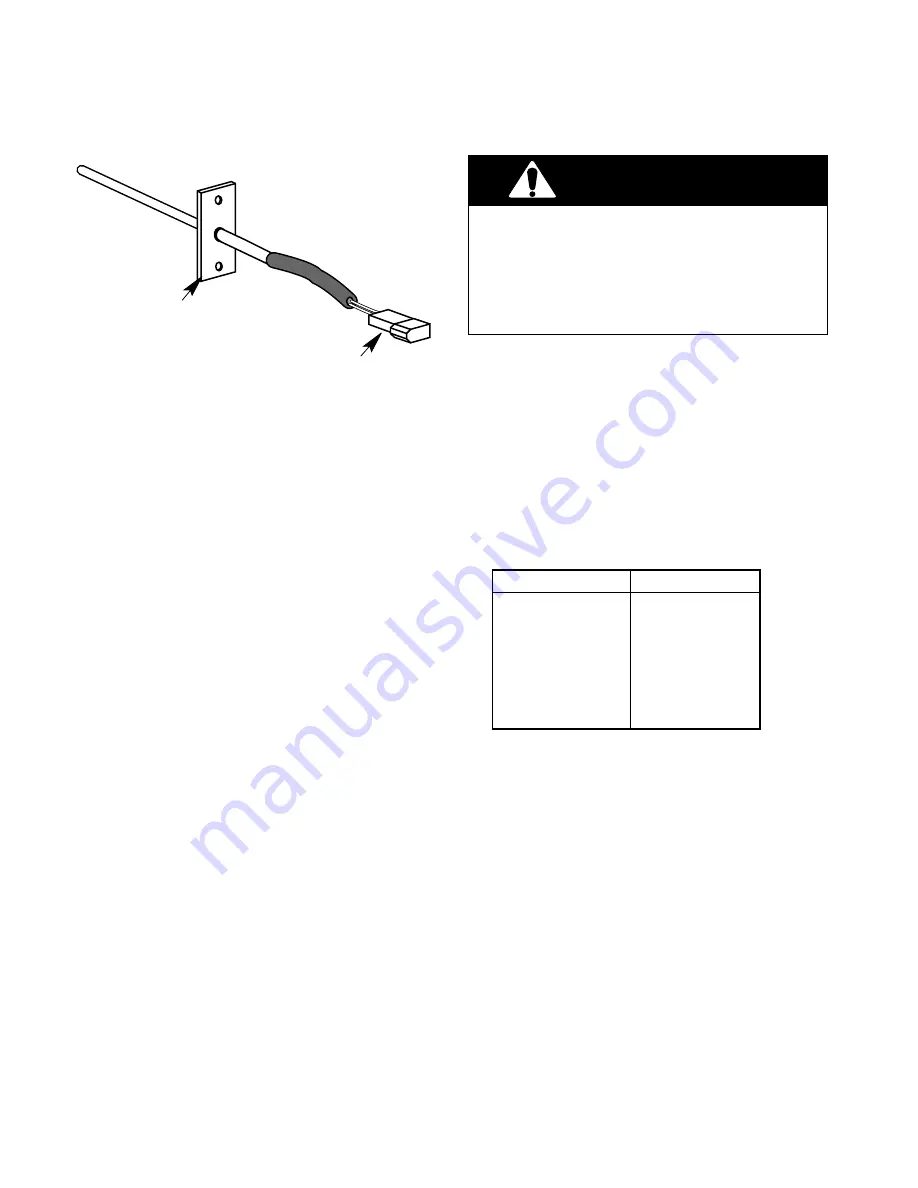
4-4
OVEN TEMPERATURE SENSOR
OVEN TEMPERATURE
SENSOR
2-WIRE
SENSOR
CONNECTOR
Electrical Shock Hazard
Disconnect from electrical supply before ser-
vicing unit.
Failure to do so could result in death or
electrical shock.
WARNING
To test the oven temperature sensor, perform
the following steps:
1.
Use an ohmmeter and set the range switch
to R x 10.
2.
With no power applied, touch the leads of
the ohmmeter to the connector pins of the
sensor (you do not have to separate the
connectors). Depending upon the oven
temperature, you should obtain the corre-
sponding reading:
Temperature (˚F)
Resistance (
Ω
)
32
±
1.9
1000
±
4.0
75
±
2.5
1091
±
5.3
250
±
4.4
1453
±
8.9
350
±
5.4
1654
±
10.8
450
±
6.9
1853
±
13.5
550
±
8.2
2047
±
15.8
650
±
8.6
2237
±
18.5
900
±
13.6
2697
±
24.4
NOTE: If the readings vary more than 25˚F
from the selected setting, the oven control
should be calibrated, as described on pages
4-12 and 4-14.
Test Procedure
Description
The operation of the Bake and Broil functions
is controlled by the oven control and the oven
temperature sensor. The oven temperature
sensor is a “Resistance Temperature Detec-
tor” (RTD), and is composed of a stainless
steel tube with a thin film of platinum at the
end. It is located at the upper left rear corner
of the oven cavity. The RTD is a nonadjustable
assembly, but may be checked at room tem-
perature, or at 350˚F. A sensor resistance of
less than 550 ohms is regarded as a shorted
sensor, and a resistance greater than 3000
ohms is regarded as an open sensor. When
the oven control senses a resistance of less
than 550 ohms, and greater than 3000 ohms,
the bake and broil functions will be turned off.
Summary of Contents for RF302BXE
Page 26: ...2 6 NOTES ...
Page 68: ...4 16 NOTES ...
















































